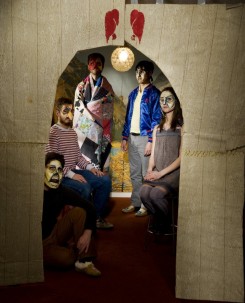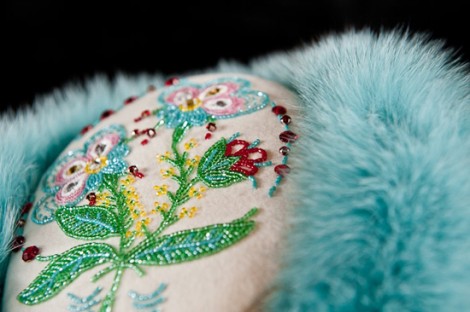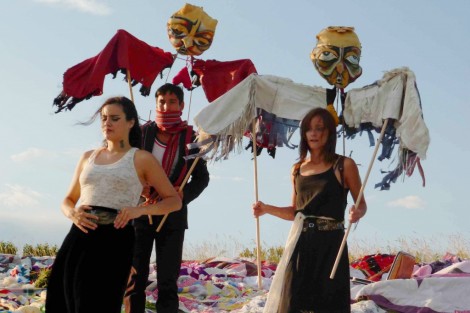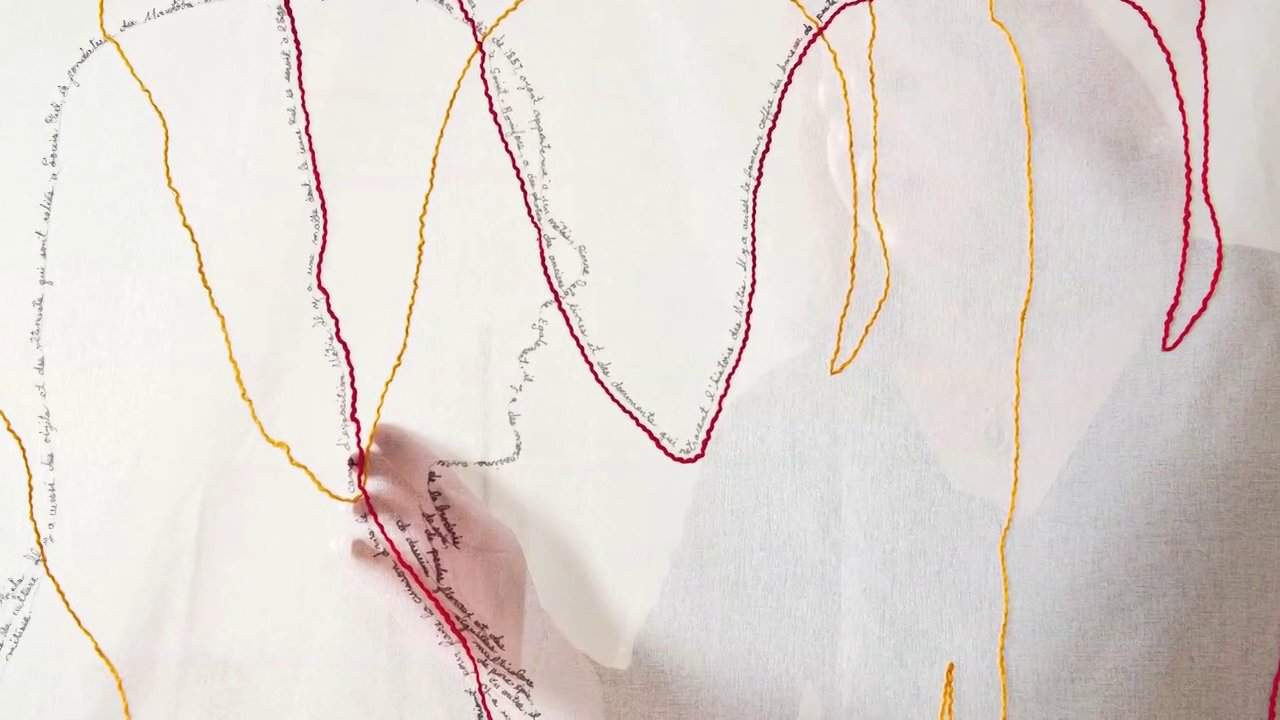On the second floor of a tiny museum beside St. Patrick subway station, fabrics, cultures and stories are dancing the farandole together.
The Textile Museum of Canada is a big-thinking little space, devoted to exploring the richness and diversity of culture through everyday materials and more specifically, fabric. TMC’s newest exhibit, Farandole: Perspectives on Western Canadian Métis Culture, features the work of two artists, Colette Balcaen and Pascal Jaouen, It blends tradition with contemporary ideas through re-invented haute couture and a sweeping art installation.

MEDIA PHOTO
Balcaen is from French-speaking Manitoba and Jaouen from Brittany, France, the two visual artists were brought together by Alliance Française to create a collaborative exhibit. As Balcaen explained in a recent interview with The Varsity, this partnership involved a one-week residency in Manitoba, where they would both visit museums and speak with the Métis people living in the area: “It was very interesting to see the difference in the embroidery between the Native peoples [and the Métis],” she explained, “The different tribes among the Native peoples each have a specific kind of embroidery, whereas the Metis have a very European influence, with the flower embroidery being typical of them.” This mixing of Native and European cultures fascinated the two artists, and thus Farandole was conceived.
The exhibit itself is divided into two halves: Jaouen’s line of revamped Métis fashion, and Balcaen’s art installation. The haute couture aspect of the display features five different outfits, each an incarnation of traditional Métis ensembles, with a distinctly modern touch. Synthetic materials, dyed fox-fur, and Celtic belt buckles make up the unconventional aspects of the piece, however, the real show-stopper is the hand-embroidered beadwork. Intricate patterns and flowers grace the clothing, echoing an old art form in a contemporary fashion.

MEDIA PHOTO
The second part of the display is Balcaen’s art installation: a room filled with fabric hung from ceiling to floor, arranged in a maze-like pattern. On this fabric, there are many people outlined in yarn, with fainter silhouettes outlined in handwritten words, retelling myriad stories. “I use unravelled yarn because the essence of my artistic creation is that I see in a piece of fabric, a hidden text, a hidden story. Because the weaving in every fabric goes row by row, line by line, and you can just imagine the story that it would tell,” elaborates Balcaen.
The stories told by Balcaen through her art were collected from 25 different people in Manitoba, telling the history of a family keepsake and how it is rooted in their culture. “What happened when they described the object, is they ended up telling me about their culture! They would say ‘Oh, my mother was Irish or my father was Scottish,’ so it’s the mixing of cultures through an object.” She describes the handwriting that forms the outlines of some of the figures as embroidery, embodying the reciprocal relationship between textile and writing. “It was also to force the people to go through the pathway I had made, who want to read these stories, to do these gestures, to be able to read,” said Balcaen. “So their movement, even if they’re just walking or stopping and trying to read, it slows them down, making my work interactive.”

MEDIA PHOTO
What is striking about the installation is how much it plays on circular movement. Walking through, the light, transparent fabric cocoons you, forcing you to follow its curves as it meanders about the room, and to watch other people interact with the artwork as well. “I wanted people to feel like they were walking into and joining the dance,” explains Balcaen.
The farandole is a traditional French community dance from the fourteenth century, involving a chain formed through linking hands and following the leader in a cyclical pattern. In a way, Farandole performs its namesake dance both through the movements of its visitors and by the full circle it creates by blending the original French and Métis roots together with stories from other cultures to culminate in a true mélange. Farandole is epitomized in one sentence, composed by Balcaen and embroidered on a dress in the exhibit — the linking thread between her installation and Jaouen’s sartorial creations: le continuum de nos histoires, de fil en aiguille trace un métissage des racines propre à notre identité.
Farandole: Perspectives on Western Canadian Métis Culture runs at the Textile Museum of Canada until November 14, 2013.


